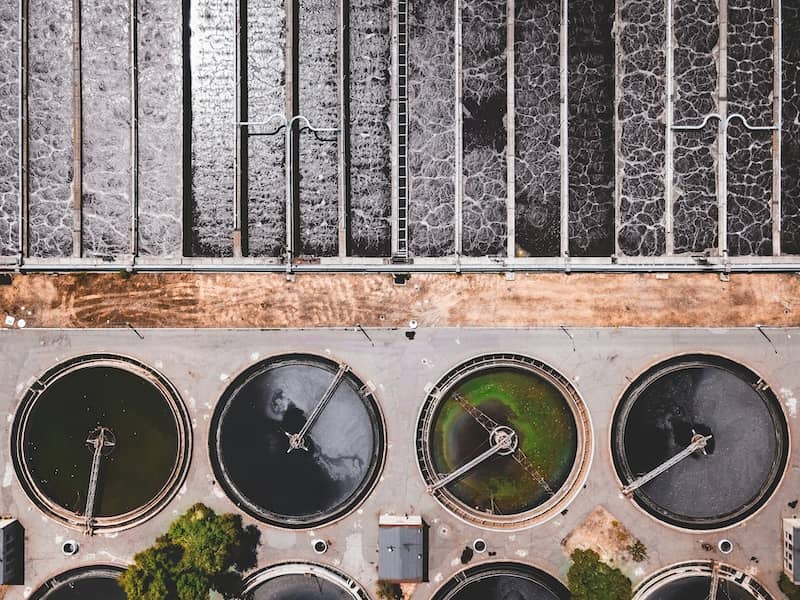Critical infrastructure – definition, meaning and components
Critical infrastructures are at the heart of today’s society. They comprise essential systems and facilities whose failure or disruption can have a serious impact on public life, the economy and security. This article sheds light on what is meant by critical infrastructure, which sectors are included and why it is so important to protect them.
Definition: Critical infrastructure
According to the definition of the German Federal Office for Information Security (BSI), critical infrastructures in Germany are described as ‘organisations and facilities of major importance for society‘. Their failure or impairment would lead to sustained supply bottlenecks, significant disruption to public safety or other dramatic consequences.
This definition makes it clear that critical infrastructures are systems that are essential for the smooth functioning of our society. The security and resilience of these infrastructures are therefore of the utmost importance.
Sectors of critical infrastructure
Critical infrastructures encompass a variety of sectors that cover different areas of public and economic life. The most important sectors are:
- Energy supply: This includes the supply of electricity, gas and fuel. A failure in this sector could have far-reaching consequences for society as a whole, as almost all other sectors are dependent on a stable energy supply.
- Water supply and wastewater disposal: These systems are essential for the health and well-being of the population. A failure could lead to serious health and hygiene problems.
- Information and communication technology (ICT): The ICT infrastructure includes telecommunication networks, internet services and other information systems that are essential for modern communication and data exchange.
- Transport and traffic: This sector includes road, rail, air and sea transport. A failure or disruption could cause significant economic and logistical problems.
- Healthcare: Hospitals, pharmacies, emergency services and other healthcare facilities are essential for providing medical care to the population.
- Finance and insurance: Banks, stock exchanges and insurance companies are crucial to the stability of the economic system.
- Food: This includes the production, processing and distribution of food. A shortfall could lead to supply bottlenecks and hunger.
- Government and administration: This sector includes the basic government functions and services required to maintain law and order.
- Media and culture: Information and media services are crucial for public communication and opinion-forming.
- Emergency and rescue services: Fire, police, civil protection and other rescue services are essential for public safety and the protection of the population.

Importance of critical infrastructure protection
The importance of protecting critical infrastructures cannot be emphasised enough. A failure or disruption in one of these sectors can have serious consequences that extend far beyond the affected area. Here are some reasons why protecting these infrastructures is so important:
- Safeguarding public safety: Critical infrastructures are often directly linked to the safety of the population. A failure could lead to serious risks to life and limb.
- Maintaining the economy: Many sectors of the economy are dependent on a functioning infrastructure. A failure could lead to considerable economic damage and job losses.
- Social stability: The availability of basic services such as energy, water and healthcare is crucial for the stability and well-being of society.
- National security: Critical infrastructures are often targets for terrorist attacks or cyberattacks. Protecting them is therefore an essential part of the national security strategy.
Challenges in the protection of critical infrastructures
Critical infrastructure protection faces a number of challenges:
- Complexity and networking: Critical infrastructures are often highly complex and interconnected. A failure in one sector can quickly have an impact on other sectors. This interconnectedness requires a comprehensive and coordinated protection strategy.
- Cyber threats: With increasing digitalisation, critical infrastructures are increasingly the target of cyberattacks. Protection against such threats requires specialised security measures and continuous monitoring.
- Physical threats: In addition to cyber threats, there are also physical threats such as natural disasters, terrorism and sabotage. Protection against these threats requires robust physical security measures.
- Regulatory requirements: Different countries and regions have different regulatory requirements and standards for critical infrastructure protection. Compliance with these requirements can be a challenge, especially for companies operating internationally.
- Scarcity of resources: Critical infrastructure protection requires considerable financial and human resources. Smaller companies and organisations in particular are often faced with the challenge of providing the necessary resources.
Legal framework and initiatives
Many countries have introduced legal frameworks and initiatives to ensure the protection of critical infrastructures. In the European Union, the NIS-2 Directive and the CER Directive are key instruments for strengthening the security and resilience of critical infrastructures.
- NIS 2 Directive: This EU directive aims to ensure a high common level of security of network and information systems in the Union. It extends the list of sectors that are considered essential and strengthens cross-border cooperation.
- CER Directive: The CER Directive aims to enhance the resilience of critical infrastructures against a variety of threats. It requires member states to implement measures to improve the physical and operational security of critical entities. This includes identifying critical infrastructures in various sectors, conducting regular risk and threat assessments, and developing and applying emergency and crisis management strategies.
Critical infrastructures summarised
Critical infrastructures are the foundation of our modern society. Their protection is of paramount importance to ensure public safety, economic stability and the well-being of the population.
Increasing connectivity and digitalisation pose new challenges that need to be addressed through comprehensive security measures and legal frameworks. Through a coordinated and continuous effort, we can ensure that these vital systems continue to function reliably and securely in the future.